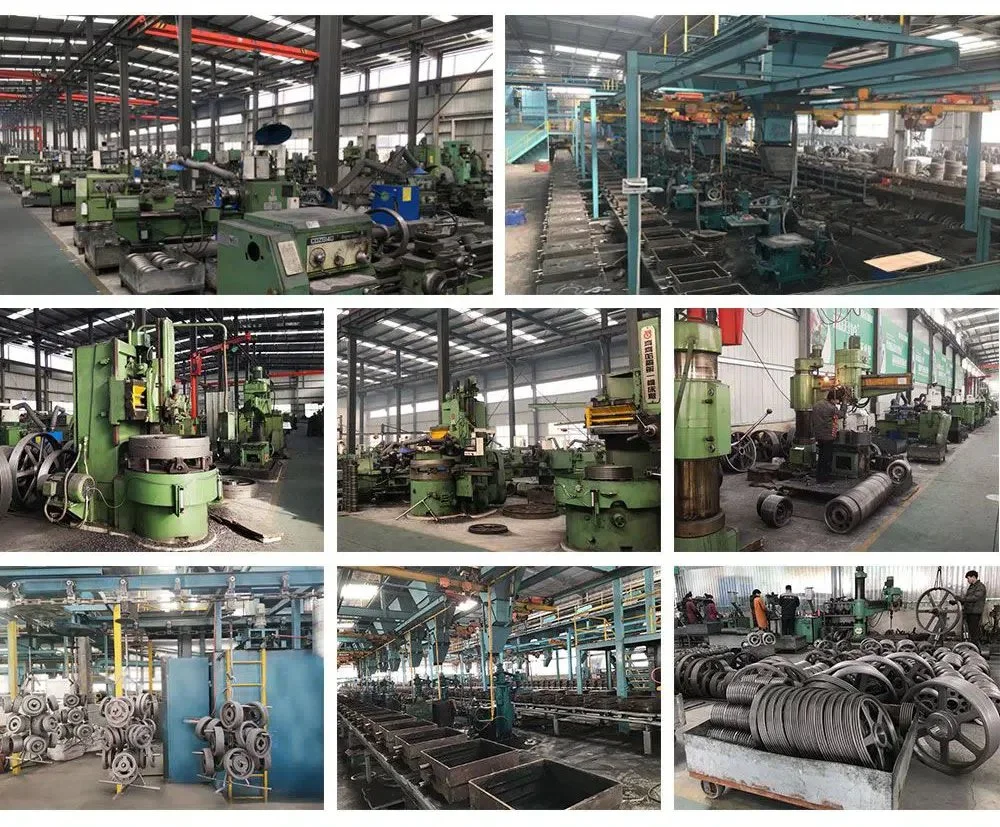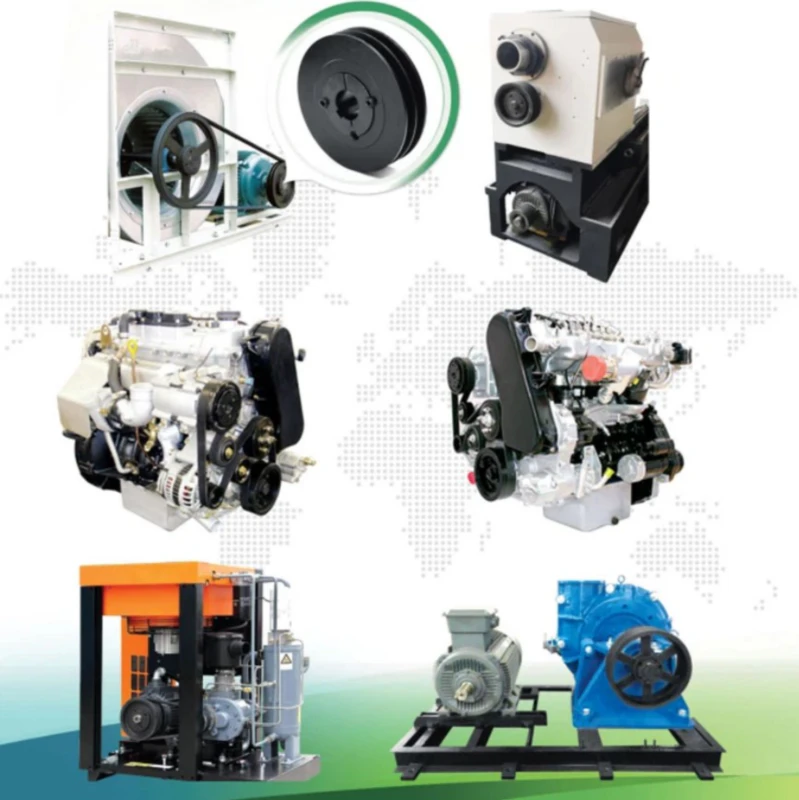Mill Equipment Taper Pulley
Introduction to Mill Equipment Taper Pulley
The taper pulley is an essential component in the machinery of mills, providing smooth and efficient power transmission. Its design allows for easy assembly and disassembly, making maintenance straightforward. Understanding its importance and applications can significantly enhance the operational effectiveness of your milling equipment.
Historical Background of Taper Pulleys
The concept of the pulley dates back to ancient times, with its basic principle remaining unchanged. However, the taper pulley has evolved, offering better performance and reliability. Initially used in basic lifting mechanisms, pulleys have now become integral in sophisticated industrial machinery.
Technical Specifications
Technical specifications of taper pulleys include dimensions, material composition, and load-bearing capacity. These factors are critical in determining the suitability of a pulley for specific applications in milling equipment. Precision in these specifications ensures optimal performance.
Material Composition
Taper pulleys are commonly made from high-strength materials such as steel or cast iron. The choice of material affects the pulley¡¯s durability and resistance to wear and tear. Advanced materials can further enhance the operational lifespan of the pulley.
Design Features
The design of taper pulleys includes specific angles and dimensions to facilitate easy installation and adjustment. These features contribute to the overall efficiency of the pulley system. The taper angle is crucial for ensuring a tight fit and effective power transmission.
Manufacturing Process
The manufacturing process of taper pulleys involves precision machining and quality control to meet stringent industry standards. Each pulley undergoes rigorous testing to ensure it can withstand operational stresses and provide consistent performance.
Applications in Milling Equipment
Taper pulleys are widely used in various milling equipment such as grain mills, feed mills, and flour mills. Their role is to transfer power from the motor to the milling mechanisms, ensuring efficient operation. Properly selected and maintained pulleys can significantly reduce downtime and maintenance costs.
Installation and Maintenance
Proper installation and maintenance of taper pulleys are crucial for their longevity and performance. Regular inspections and timely replacements of worn-out components can prevent unexpected breakdowns. Simple maintenance procedures can prolong the life of the pulley system.
Common Problems and Solutions
Common problems with taper pulleys include misalignment, wear and tear, and improper tensioning. Addressing these issues promptly can prevent more significant damage to the milling equipment. Solutions often involve realignment, lubrication, and replacing worn-out parts.
Advantages of Using Taper Pulleys
Taper pulleys offer several advantages, including easy assembly, improved load distribution, and efficient power transmission. These benefits make them an ideal choice for various industrial applications. Their robust design ensures reliable performance even under heavy loads.
Efficiency and Performance
The efficiency and performance of taper pulleys are influenced by their design, material, and maintenance. High-quality pulleys ensure smooth operation and reduce energy consumption. Regular performance assessments can help in maintaining optimal efficiency.
Cost-Effectiveness
Investing in high-quality taper pulleys can be cost-effective in the long run. By reducing maintenance costs and downtime, they offer a good return on investment. Comparing initial costs with long-term benefits is essential in making an informed purchasing decision.
Safety Considerations
Safety is paramount in the operation of milling equipment. Using properly designed and maintained taper pulleys can prevent accidents and injuries. Adhering to safety guidelines during installation and maintenance is crucial.
Innovations in Taper Pulley Design
Recent innovations in taper pulley design include the use of advanced materials and manufacturing techniques. These innovations aim to enhance durability, efficiency, and ease of maintenance. Staying updated with the latest advancements can provide a competitive edge.
Case Studies
Several case studies demonstrate the impact of taper pulleys on the efficiency of milling operations. These studies highlight the benefits of using high-quality pulleys and the importance of proper maintenance. Learning from real-world examples can provide valuable insights.
Comparative Analysis with Other Pulleys
Comparing taper pulleys with other types of pulleys, such as flat belt pulleys and V-belt pulleys, can help in understanding their unique advantages. Each type of pulley has its specific applications and benefits. A comparative analysis can guide in selecting the right pulley for your needs.
Future Trends
The future of taper pulleys lies in continued innovation and development. Emerging trends include the integration of smart technologies for predictive maintenance and enhanced performance. Staying ahead of these trends can ensure the continued efficiency of milling operations.
Environmental Impact
The production and use of taper pulleys have an environmental impact. Using sustainable materials and manufacturing processes can help in reducing this impact. Environmental considerations are becoming increasingly important in industrial operations.
Customization Options
Customization options for taper pulleys include specific dimensions, materials, and coatings. Customization ensures that the pulleys meet the unique requirements of your milling equipment. Working with a supplier that offers customization can provide significant benefits.
Quality Control
Quality control is critical in the production of taper pulleys. Rigorous testing and inspection processes ensure that the pulleys meet industry standards. High-quality pulleys contribute to the overall efficiency and reliability of milling equipment.
Supplier Selection
Selecting the right supplier for taper pulleys is essential for ensuring quality and reliability. Factors to consider include the supplier¡¯s reputation, manufacturing capabilities, and customer service. A reliable supplier can provide high-quality products and support.
User Testimonials
User testimonials provide valuable feedback on the performance and reliability of taper pulleys. Positive testimonials can reinforce the benefits and trustworthiness of the product. Potential buyers can gain insights from the experiences of other users.
Installation Guide
An installation guide provides step-by-step instructions for installing taper pulleys. Proper installation ensures optimal performance and longevity. Following the guide can prevent common installation errors and ensure the correct setup.
Maintenance Checklist
A maintenance checklist helps in keeping track of regular maintenance tasks. Regular maintenance is essential for the longevity and efficiency of taper pulleys. A well-maintained pulley system can prevent unexpected breakdowns and extend the equipment¡¯s lifespan.
Conclusion
In conclusion, taper pulleys are vital components in milling equipment, offering numerous benefits including efficient power transmission and ease of maintenance. Understanding their applications, maintenance, and innovations can enhance the operational efficiency of your milling operations.
Our Company and Products
Our company is a leading player in the Chinese pulley market, offering a wide range of high-quality products including HTD pulleys, plastic pulleys, timing pulleys, belt idler pulleys, belt pulleys, V pulleys, compound pulleys, and heavy-duty pulleys. We have over 300 sets of fully automatic CNC production equipment and automatic assembly equipment, ensuring high-quality and precision manufacturing.
We are committed to providing superior products, competitive prices, and excellent customer service. Our customers are welcome to provide drawings and samples for customization. For more information on our products and services, please visit our website or contact our sales team.


Author: Czh